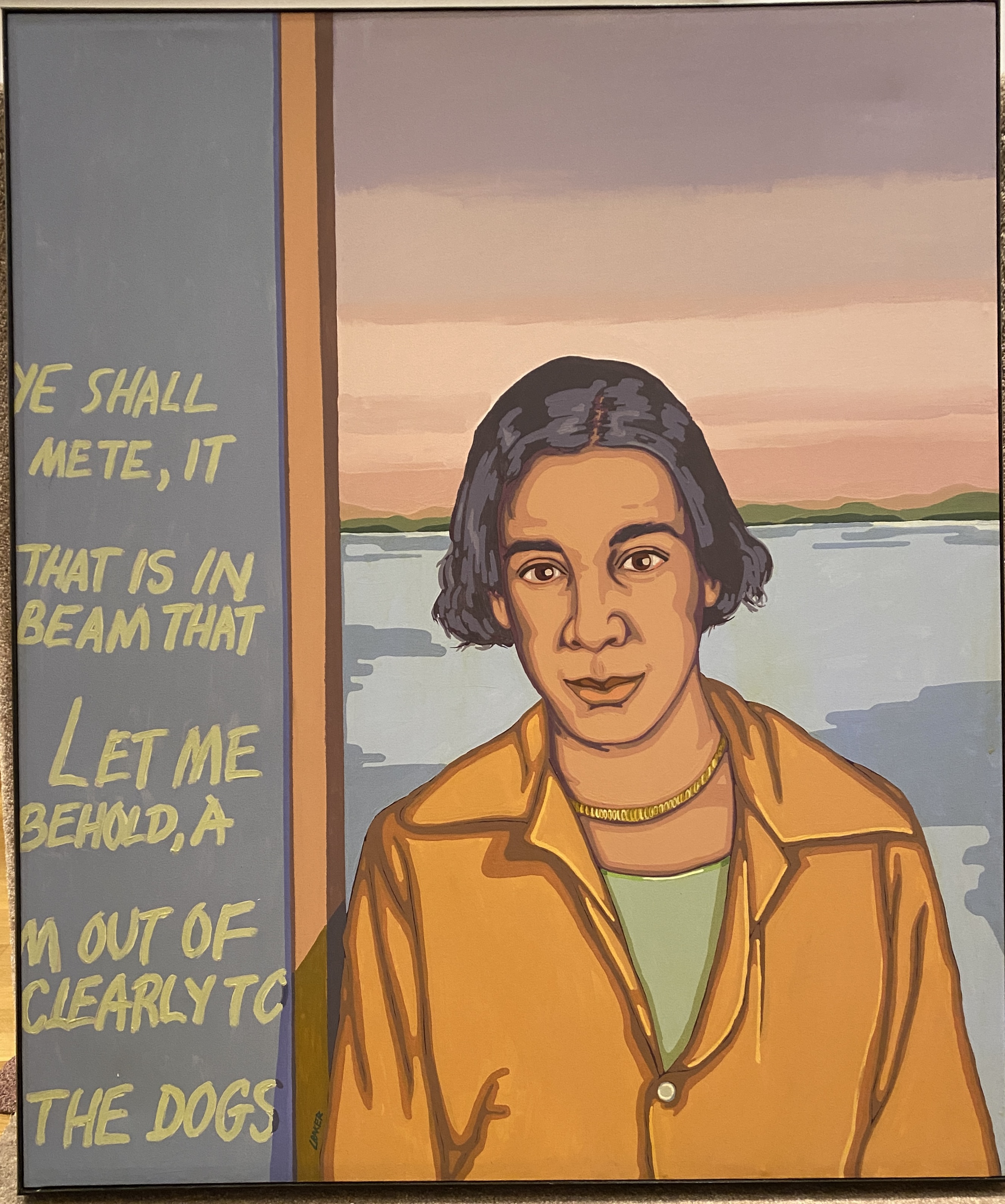Lawrence Baker
(Jacksonville, Florida, 1947 - )
Reflection of Juan
1991
Acrylic on canvas
50 x 41 7/8 in. (127.0 x 106.4 cm)
Collection of the Akron Art Museum
The Mary S. and Louis S. Myers Endowment Fund for Painting and Sculpture
2022.8.1
More Information
Lawrence Baker’s artistic output can be cleanly divided into two phases: until around the year 2000, he created colorful figurative paintings, and since then he has made detailed graphite drawings of closely cropped views of nature. Reflection of Juan and Girl and Plant are from the artist’s earlier period. Baker describes a particularly important moment in the formation of this style, which occurred during his BFA studies at Kent State University: “Subconscious racial shame caused the black models in my paintings to appear as Caucasian even if they had dark skin… Joseph O’Sickey, one of my instructors, was very helpful in reversing this distortion in my art. When this abnormality was first brought to my attention, it was an embarrassment because I knew it was true… I realized later, that I was painting like this to get a good grade and was hoping that these paintings would be accepted by art galleries if the figures were not too black-looking.” By around 1972, Baker had ceased painting figures with lightened skin and became firmly determined to pursue his own artistic impulses, even in the face of racial bias and many rejections from museums and galleries. In his own words, “I don’t believe in changing my style to fit the fashion of the day; changing my art for the sake of sales would subvert my integrity as an artist. Still, I reasoned that all rejections could not be attributed to the quality of the work, or the style…. My letter in response to the rejection letters, stated that ‘my work was rejected, not because it is poor work, but because what you know about African-American art is nothing.’” Baker settled into his figurative style through a personal synthesis of the art he found compelling: “Some artists that I looked at when I was painting… Fairfield Porter, Alex Katz, Milt Avery, Jacob Lawrence. I looked at Avery for his pastel-like colors to create shapes and what those shapes did to complete the composition within the painting. I looked at Fairfield Porter and Alex Katz; they painted three-dimensionally, but they approached it in a different way. I saw it as a kind of reduction of shapes to create volumes. And so, I looked at that stuff and then I had to decide on how I was doing to do [my own] stuff.” Katz was particularly influential in Baker’s growth as a painter: “I first made paintings of members of my family in the flat muted comic book style of Alex Katz. Katz was called a mannerist because he had an informal style of drawing that was cartoon-like, but with a clear level of formal perfection. His colors were pastels and his figures simplified to the point of vacantness. It was his goal to create in the moment by drawing the world as it was, with direct strokes. When I interviewed Katz in the late 1970s, I told him how much I admired his work and he encouraged me to continue experimenting until I found my own style.” Baker did indeed develop his own style—his work includes a greater sense of weight and three-dimensional modeling than is usually found in Katz’s paintings, but it still retains an admirable “level of formal perfection,” such that the simplified colors and contours in his pictures appear chosen and composed with concentrated intention. In recalling the creation of the two paintings under consideration here, Baker primarily describes the works as attempts to challenge himself with new pictorial elements. Reflection of Juan was an experiment in adding script and a stronger sense of narrative into a painting, while and Girl and Plant introduced a contrast between curving foliage and rectilinear architectural elements.

